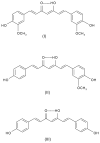Challenges associated with metal chelation therapy in Alzheimer's disease
- PMID: 19363258
- PMCID: PMC2931820
- DOI: 10.3233/JAD-2009-1068
Challenges associated with metal chelation therapy in Alzheimer's disease
Abstract
A close association between brain metal dishomeostasis and the onset and/or progression of Alzheimer's disease (AD) has been clearly established in a number of studies, although the underlying biochemical mechanisms remain obscure. This observation renders chelation therapy an attractive pharmacological option for the treatment of this disease. However, a number of requirements must be fulfilled in order to adapt chelation therapy to AD so that the term "metal targeted strategies" seems now more appropriate. Indeed, brain metal redistribution rather than brain metal scavenging and removal is the major goal of this type of intervention. The most recent developments in metal targeted strategies for AD will be discussed using, as useful examples, clioquinol, curcumin, and epigallocatechin, and the future perspectives will also be outlined.
Figures



References
-
- Blennow K, de Leon MJ, Zetterberg H. Alzheimer's disease. Lancet. 2006;368:387–403. - PubMed
-
- Lovell MA, Robertson JD, Teesadale WJ, Campbell JL, Markesberry WR. Copper, iron and zinc in Alzheimer's disease senile plaques. J Neurol Sci. 1998;158:47–52. - PubMed
-
- Rao KSJ, Rao RV, Shanmugavelu P, Menon RB. Trace elements in Alzheimer's disease brain: A new hypothesis. Alz Rep. 1999;2:241–246.
-
- Campbell A, Smith MA, Sayre LM, Bondy SC, Perry G. Mechanisms by which metals promote events connected to neurodegenerative diseases. Brain Res Bull. 2001;55:125–132. - PubMed
-
- Zatta P, Lucchini R, van Rensburg SJ, Taylor A. The role of metals in neurodegenerative processes: aluminum, manganese, and zinc. Brain Res Bull. 2003;62:15–28. - PubMed
Publication types
MeSH terms
Substances
Grants and funding
LinkOut - more resources
Full Text Sources
Medical

